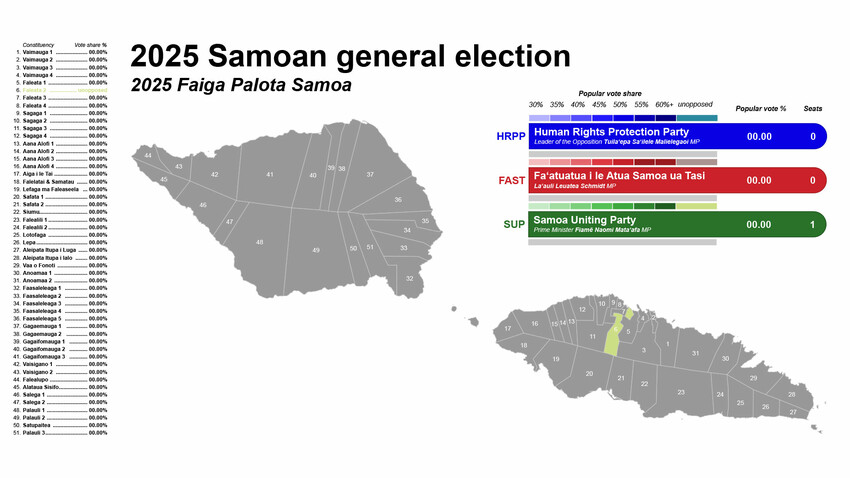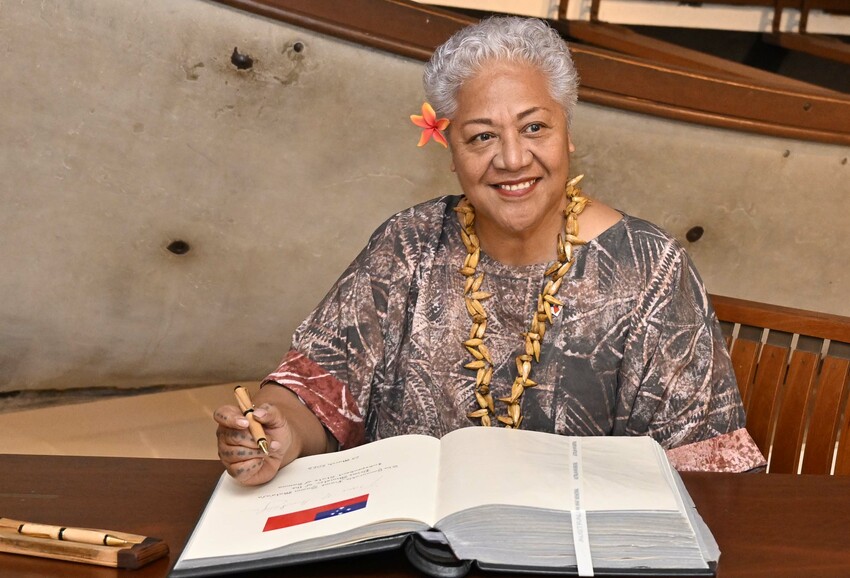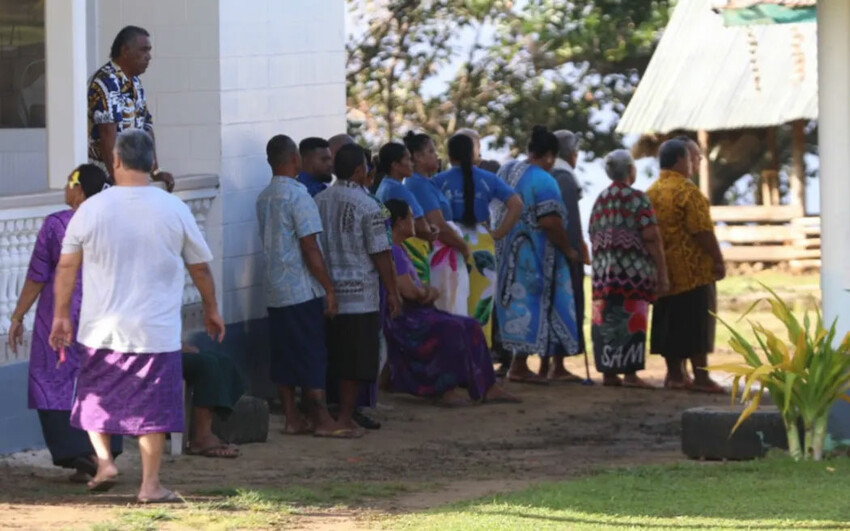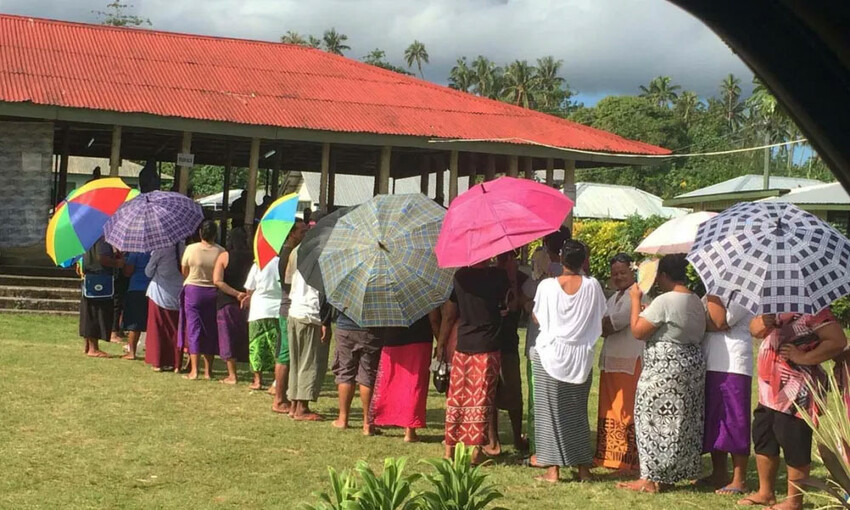Samoa’s 2025 General Election Explained

Samoans head to the polls today in what’s shaping up to be one of the most unpredictable elections in the country’s history.
Samoa’s ballot boxes may be full of promises, but like the beehive in Wellington, it’s the delivery truck that everyone is waiting for.
With political rivalries, cost-of-living struggles, and global powers watching closely, here’s a run down for beginners to Samoa’s Election 101:
Why is Samoa voting now?
This election comes earlier than expected after months of political turmoil.
- Prime Minister Fiamē Naomi Mataʻafa was forced to call a snap election when her minority government couldn’t pass the 2025/26 budget in May.
- Before that, she survived two no-confidence motions within weeks, but her hold on power was shaky.
- The crisis followed a messy split inside her former party, FAST, after disputes with its chair, La’aulialemalietoa Leuatea Schmidt.
- On top of that, power blackouts, rising inflation, and infighting piled pressure on her leadership.
For many Samoans, the hope is simple: stability. Nobody wants a repeat of 2021, when a contested result left the country without a functioning government for 45 days.

Who’s running?
A total of 187 candidates (including 46 independents) are contesting 50 seats in parliament, across six political parties. But the race boils down to three major figures:
- Fiamē Naomi Mataʻafa
- Current caretaker PM, now leading a new party, the Samoa Uniting Party (SUP).
- Samoa’s first female PM, who broke away from FAST after being ousted in an internal battle.
- Tuilaʻepa Saʻilele Malielegaoi
- 81 years old, head of the Human Rights Protection Party (HRPP).
- Former PM who dominated Samoan politics for over two decades.
- La’aulialemalietoa Leuatea Schmidt
- Former agriculture minister, now leader of FAST after replacing Fiamē.
- Faces ongoing court cases, but remains a strong contender with grassroots support.

What are they promising?
Cost of living is the number one concern for Samoan voters. All three frontrunners are pitching solutions, but in different ways:
- FAST wants to raise the minimum wage to ST$6 per hour, scrap VAGST and duties on certain essentials like rice, sugar, and baby formula, and lift the tax-free income threshold to ST$20,000. They argue this will directly ease pressure on low- and middle-income households while boosting local purchasing power.
- HRPP is offering a ST$500 allowance to every Sāmoan each year, a five-year tax holiday for new small businesses, and a cut to the top income tax rate from 27 per cent to 25 per cent. Party leader Tuila‘epa has framed this as a “fair share dividend” designed to stimulate growth and support entrepreneurship after years of pandemic strain.
- SUP is promising to reduce VAGST from 15 per cent to 12 per cent, remove it completely from freezer goods such as chicken and fish, scrap tax on electricity, and give a 20 per cent refund to all income taxpayers. Their pitch is that broad-based tax relief will bring down the cost of living for every household, while the refund provides an immediate cash boost to workers.
Other common pledges include boosting pensions, upgrading hospitals, improving disability support, and easing school costs.
How does the voting system work?
- Samoa has a parliamentary democracy with 51 seats (one already decided, leaving 50 contested today).
- Voting is first-past-the-post in each electoral district.
- All MPs must hold a matai (chief) title and prove their monotaga (service) to their village before running.
- A minimum of 10% of seats are reserved for women, under a quota system.
- Independents can be powerful: after elections, they may align with parties and influence who forms government.

What role does faith and culture play?
Campaigning officially stopped on Sunday, with posters and billboards taken down. In the lead-up to today, villages gathered for evening prayers, asking for peace and fairness.
Many voters RNZ spoke to said they were proud to cast their ballots, while others simply prayed that God would bless the process.
What about Samoa’s foreign ties?
While domestic issues dominate, the result could shift Samoa’s international direction.
- Samoa owes 2.6% of its GDP in debt to China – one of the highest rates globally.
- Fiamē has balanced relations, cancelling a China-funded $100m port and stressing debt caution.
- Tuilaʻepa has long embraced Beijing, backing Chinese infrastructure projects.
- Whoever wins will guide Samoa’s stance with China, Australia, and the US – especially with the Pacific Islands Forum summit in Honiara just weeks away.

The bottom line
- More than 100,000 registered voters are eligible.
- Polls close at 3pm local time (2pm NZT), with results expected soon after.
- For Samoans, the stakes are immediate: stability, lower living costs, and a government that can last.
- For the region, the outcome signals where Samoa stands in a Pacific caught between big powers.
In Samoa, as in Wellington, campaign trails are paved with promises — but voters are watching closely to see who can actually deliver the goods.
As one Samoan living in the diaspora says:
“This is an interesting election for Samoa. It seems like there are 2 different realities, the online election rhetoric and the in person and Samoa based realities. Quite often, political discussions have been laced with misinformation online and groups of vocal supporters are choosing to express their views and support prominently online. But such is the nature of our community, there is division online but in person, and on the ground, it's possible for most people to be connected to several politicians of different parties or interests.
The loud diaspora supporters are not home, feeling the heat and living the realities”
